When to Collect Social Security Payments
Making the decision when to collect Social Security payments can be difficult. While many people believe the deciding factor is age alone, there are more variables to consider.
There is no single, universally correct answer that covers all federal employees at the time of their retirement. However, two major considerations for determining when to collect Social Security payments are as follows:
When do they need the cashflow?
When to collect Social Security payments is determined in large part by how quickly a federal retiree needs the money. Some have minimal expenses and a significant nest egg at retirement, while others are still dealing with mortgage payments or other outstanding obligations. In the latter cases, waiting may not be an option.
Depending on how long an employee decides to work, one important subsidy may be the Special Retirement Supplement (SRS).
A federal employee has two paths on which to become eligible for retirement benefits:1
1. Retiring at 60 years old after 20 years of federal service, or
2. Retiring at any age after 30 years of federal service.
In either case, the federal retiree is likely eligible for SRS payments.
The SRS is a stopgap that provides federal retirees with supplemental income from the date of retirement to the age of 62, when they become eligible to collect Social Security payments. This provides financial support for those federal employees who retire prior to the age of 62 and need the additional cash flow prior to collecting Social Security.
However, the question remains whether the federal retiree will then have enough money to fulfill monthly obligations after SRS payments stop. This will go a long way in deciding when to collect Social Security payments.
At what age do they “break even”?
While a federal retiree can begin collecting Social Security payments at 62, they have the option to postpone those payments until the age of 70. While on the surface the choice may seem obvious, the decision as to when to collect social security payments takes more into consideration than one might realize.
If a federal retiree collects Social Security payments before the Full Retirement Age (FRA) of 67, benefits will be reduced permanently by as much as 30%, 2 while the benefits grow by approximately 8% each year that payments are deferred.
The decision then becomes one of life expectancy. Deferring payments until the FRA is inherent with the risk that the federal retiree dies shortly thereafter. For a federal retiree to “break even,” or receive the same total payout in either scenario, the federal retiree will need to live up until a certain age.
For example, if a federal retiree can expect Social Security monthly payments of $1,000 at age 62, that payment would increase by about 8% per annum to $1,469 if the federal retiree were to wait until age 67. In this case, the federal retiree would make up the forgone 5 years of $1,000 payments (between the ages of 62 and 67) at age 74 if receiving payments of $1,469.
No two retirement ages are the same
These are just two of the many factors that can influence the decision when to collect social security payments, and no two situations are alike.
At Your Benefit Resource Partners, we understand that your circumstances require a specific strategy. Our team is experienced in tailoring a retirement strategy that best fits each client’s individual financial situation.
2 Benefits Planner: Retirement | Retirement Age and Benefit Reduction | SSA
Benefit Resource Partners is not affiliated with a government agency.
Investment advisory services offered by duly registered individuals on behalf of CreativeOne Wealth, LLC a Registered Investment Adviser. CreativeOne Wealth, LLC and Benefit Resource Partners are unaffiliated entities.















